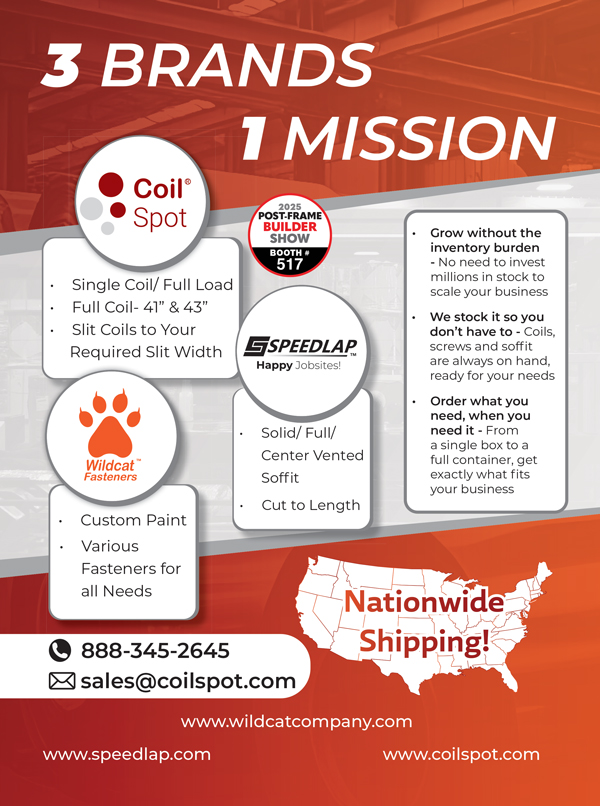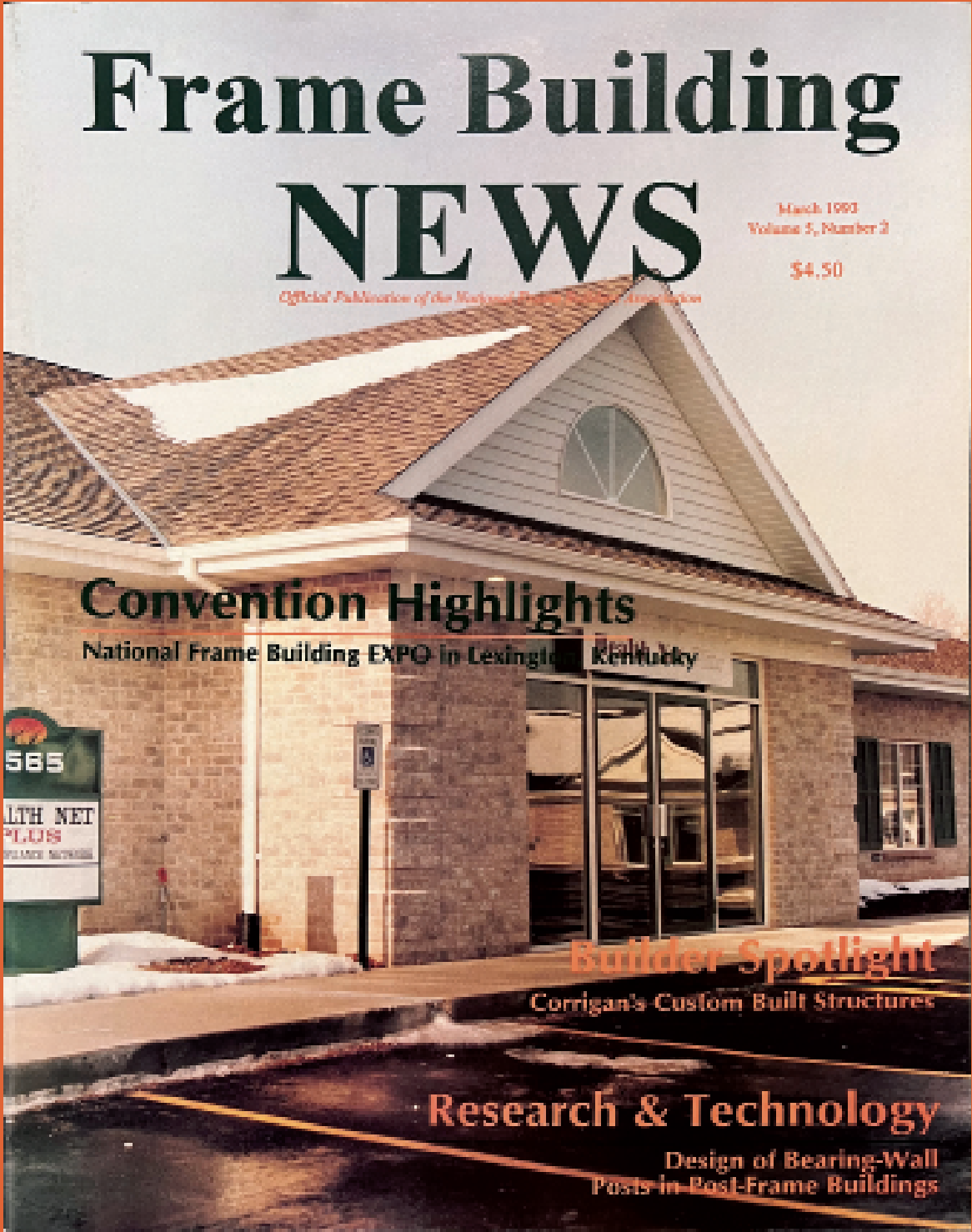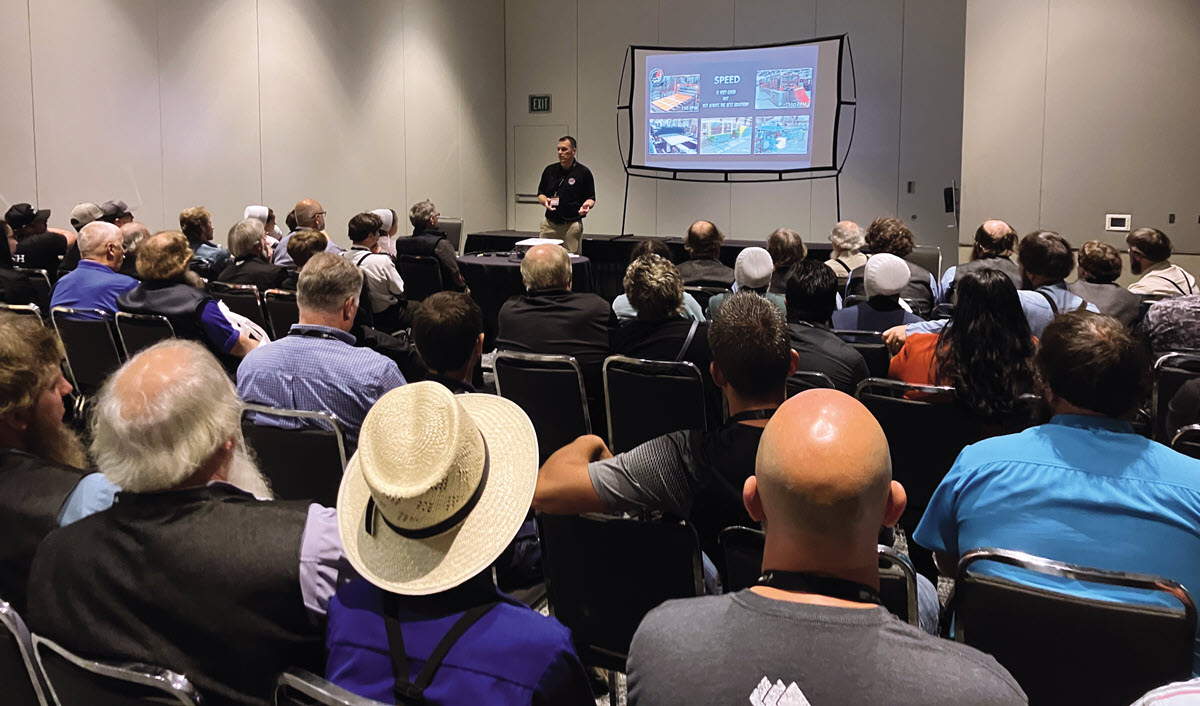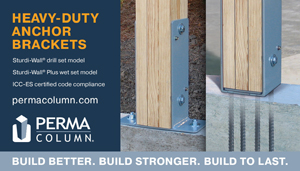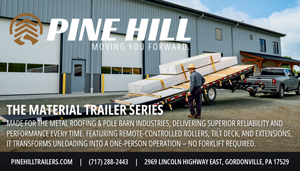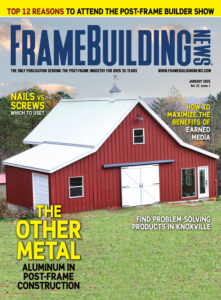By Randy Chaffee
Overall, we as an industry have maneuvered the past couple of years fairly well. Business in both the post-frame building and metal roofing industry has remained strong. This is a testament to an industry filled with strong, caring, and detail-oriented professionals.
I think we all can agree that we faced two very challenging scenarios simultaneously during this time frame. The dreaded supply chain issues coupled with labor shortages have certainly been a one-two punch. The good news is that we all seemed to take a collective breath at about the same time. There seemed to be an almost universal throwing of our hands in the air and an acknowledgement of “let’s do the best we can.”
The Customer Buy-in
An important part of success in our daily business lives involves how we manage customer expectations. Specifically, how do we maintain our customer buy-in after the sale? We all put enormous effort into the marketing and sales effort, right? We develop advertising for the proper market. We train sales teams to build the much-desired win-win. We make the deal.
The sale is made. Materials are on order. The job is scheduled. Mission Accomplished, right? Not so fast. Even though the supply chain issue is better than it was months ago, it’s not perfect. Then there is that nagging labor shortage that can make itself felt at any time. Obtaining the upfront sale is only part of a successfully completed deal. What happens when things don’t happen as planned? It depends on how we manage the expectations upfront and how we communicate and manage issues that arise before and/or during the project.

During the Sales Process
I’ve found that clear upfront expectations are an absolute must. Everyone has, at minimum, an elementary understanding of both supply and labor concerns. It’s not new at this point; no need to hide from it. If we build a good rapport up front, then guiding the customer to understand the timelines will go a long way if and when things go awry. We simply should not promise the world if we believe this could be problematic. The old phrase of “promise less and deliver more” could not be more applicable here. Yes, sell the job. Just don’t promise things we know are not going to happen. These overpromises can lead to a challenging phase two of the process and likely a negative phase three.
As the Job Is Underway
What happens when mid-project issues arise? First, we’ve hopefully explained that some things can develop which are out of our control. The most important thing here is to maintain a very close and caring relationship before, during, and after the completion. As salespeople, the tendency can be to think we are done when the job is complete. That’s far from the truth.
I understand some companies have a designated person outside of sales to maintain the relationship during this phase. Crew foreman or install managers come to mind. If the person communicating with the customer during construction is not going to be the salesman, I suggest at minimum he/she personally introduce the contact person to the customer.
This part is huge: when is the best time to drop the bad news? Immediately! This is a non-negotiable from my perspective. Bad news is always better received as soon as possible. Also, we cannot simply say: “it is what it is,” and move on. Understand that, while the customer may understand, they will be disappointed or concerned.
Personally, I feel the salesperson needs to maintain an ongoing communication during the install process. Build the relationship further for stage three.
Upon Completion
Yes! The job is completed. This is an equally important time. Let’s make sure the customer is now feeling “juiced” about his/her decision. A positive wrapup will put us in a position to ask for referrals and use the customer as a reference. I understand with demands on all our time, it’s easy to just get a completion sign off and “collect the last check”. Take some time here my friends. This is the last opportunity you may have to help the customer become or remain a raving fan.
Lastly, if we create a happy customer, we should not be afraid to ask for referrals and to use that customer as a reference … now is the best time! They are pleased that the project is done and how you have communicated throughout. Don’t miss this opportunity to take advantage of this good will. Final thought: don’t forget them. Occasionally following up goes a long way in keeping the pipeline to new opportunities open. Call. Stop by. Send a card. Force multipliers, my friends. FBN



